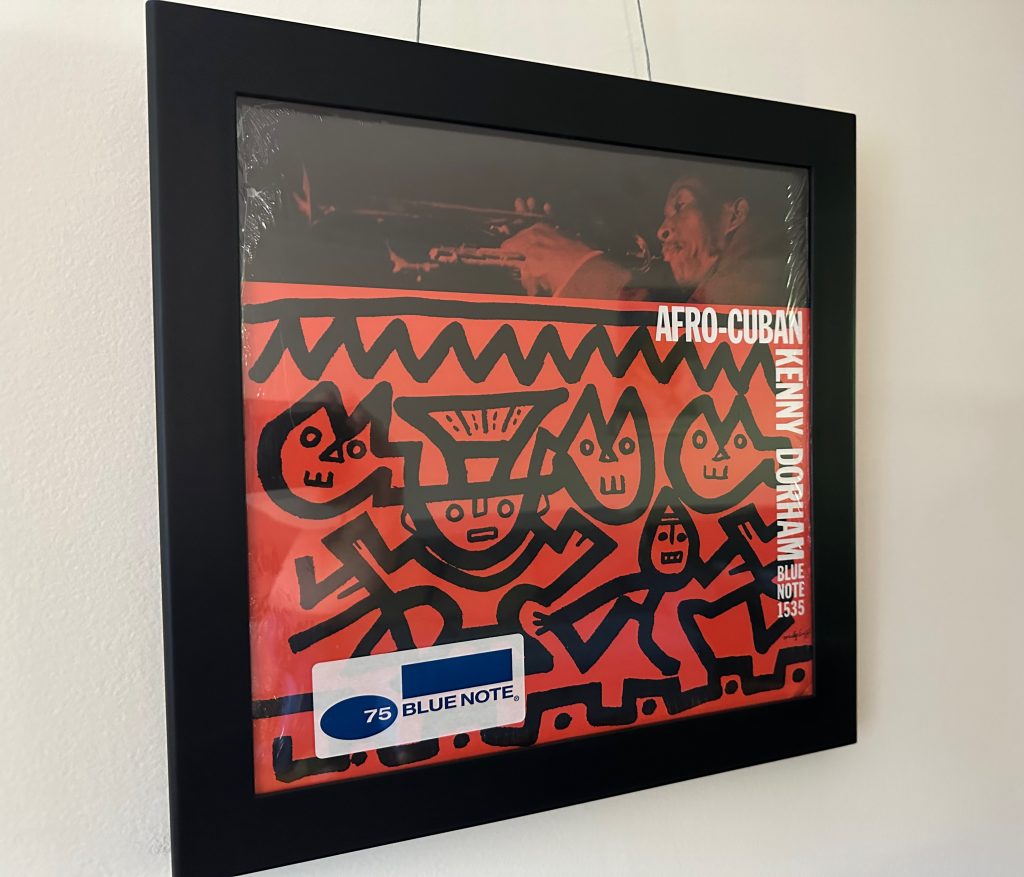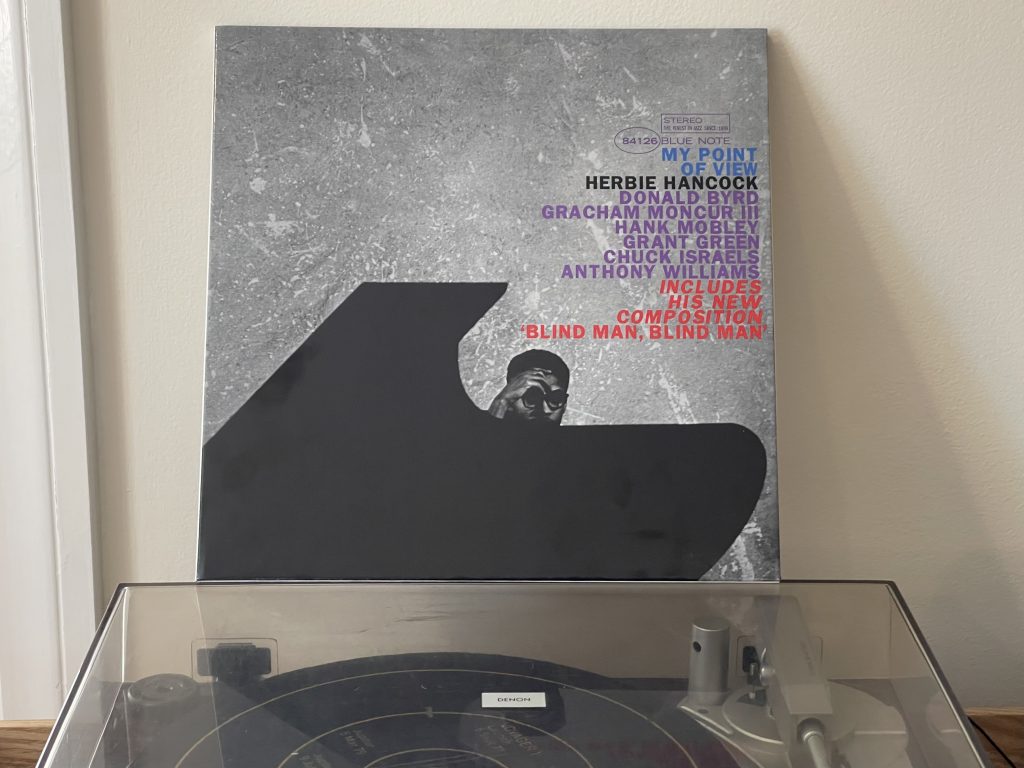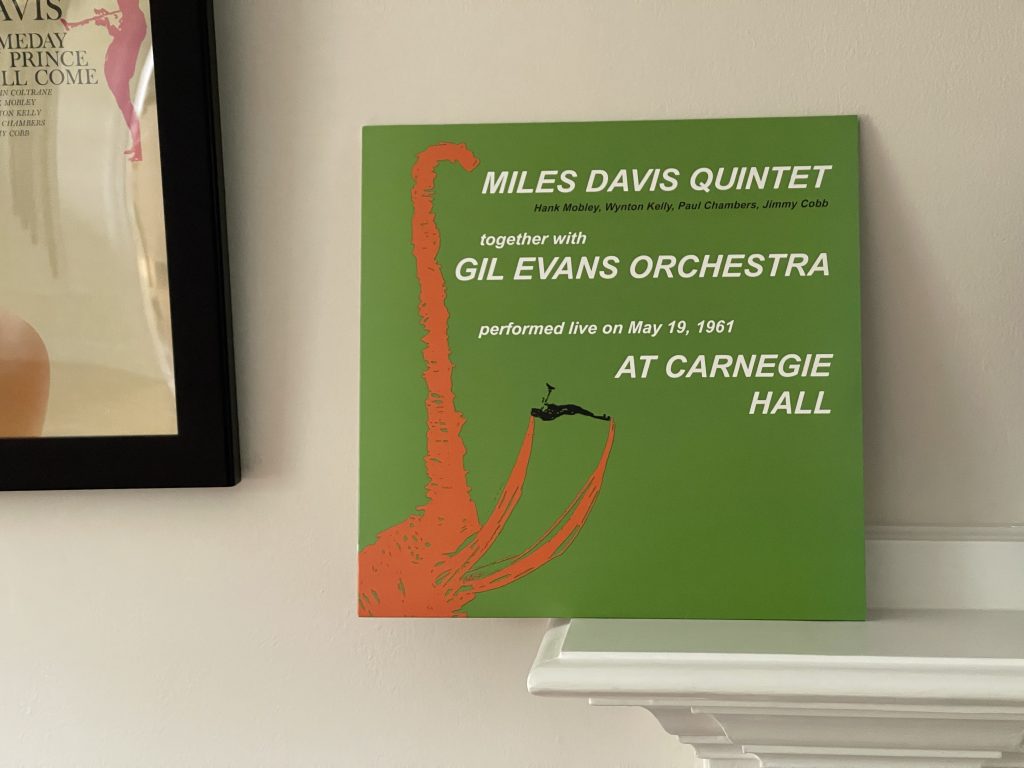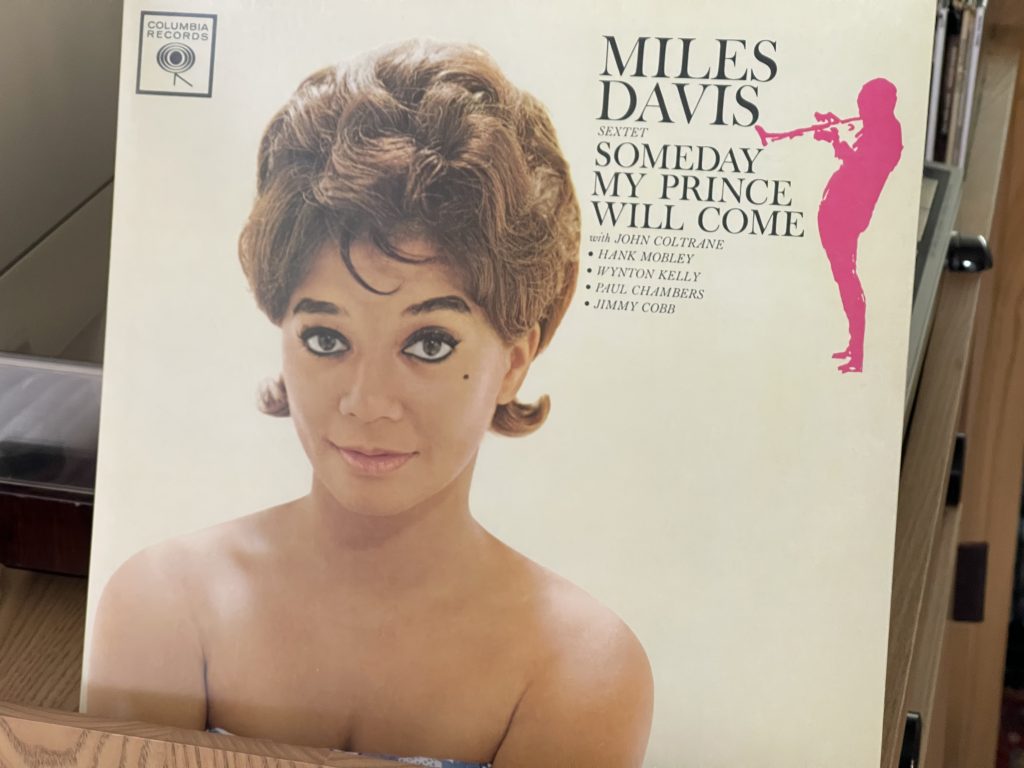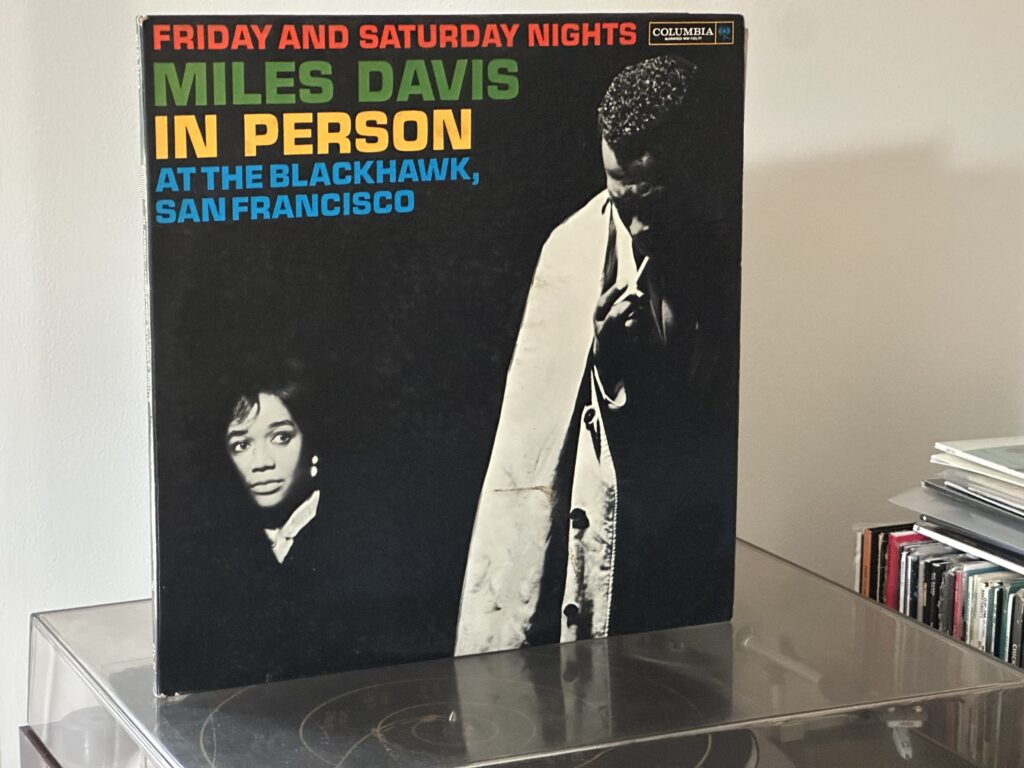
Album of the Week, September 7, 2024
In the years following Kind of Blue, Miles’ great sextet dissolved, with both John Coltrane and Cannonball Adderley choosing to begin their own careers as leaders. Perhaps responding to the change in personnel, Miles’ next album, Sketches of Spain, was another collaboration with Gil Evans in the mold of Miles Ahead (but even more so… we’ll have to review that record another day). We’ve seen how Miles convinced Coltrane to return, on Someday My Prince Will Come, recorded in March 1961. That record also featured Hank Mobley, who toured and recorded with Miles throughout 1961. We’ve heard his work on At Carnegie Hall; today we hear him with Miles, Paul Chambers, Jimmy Cobb and Wynton Kelly in one of the great trumpeter’s more famous live recordings.
Recorded almost a month before the Carnegie Hall set, on April 21-22, 1961 at the Black Hawk nightclub in San Francisco, the album is significant as a document of Miles’ live set and repertoire following Kind of Blue, in the same way that his Jazz at the Plaza captured the 1958 band at its peak. The album has been issued in various formats ranging from individual LPs of selections from the Friday and Saturday night performances, to a box set documenting the entirety of both nights, to today’s record, a two-LP set combining the individual LP releases from later in 1961. The copy I’m reviewing today is a mono first pressing.

Because of the wide deviation in groupings and track orders, I’m going to deviate from my normal practice of commenting on the album track by track. (Also, the most readily available versions of the album feature slightly different edits of the songs, and I’m not going to get into the differences here.) What I’ll start with is the sound. While this set features many of the same players that were with Cannonball Adderley on his In Chicago, there’s little of the soul that lingered at the edges of that recording. There’s also surprisingly little of the modal, cool sound of the Gil Evans recordings or Kind of Blue. This is a hot band, and (perhaps due to the vagaries of live recording) a lighter, more nimble sounding band.
Some of the credit for the former surely accrues to Hank Mobley. His solo on “Walkin’” is a taut, athletic bit of genius that gets to stretch out across a vast swath of choruses. He writes a different melody into “Bye Bye Blackbird” that seems to borrow equal parts from Johnny Hodges and John Coltrane. But he also seems at times to be apart from the band. Where Miles’ arrangements for the first great quintet or his sextet would have the saxophone(s) sharing the lead in harmonic writing with his trumpet, here the solos and recapitulations are Miles’s alone. One imagines Mobley standing near the back of the bandstand listening, stepping forward to play his solo, and stepping back again. The exception as always is “No Blues,” but in that gem the interplay between the horns is a part of the tune.
The longer performances also afford an opportunity for the rest of the rhythm section to stretch out. We get an arco solo from Paul Chambers in “Walkin’,” something we hear in other appearances by him but which had grown rather rare by this point. We don’t hear too many solo moments from Jimmy Cobb, who always preferred to provide unswerving, steady support from the background, but he and Chambers are flawless together as a unit and maintain a high degree of attention to the other players, particularly Kelly.
Kelly’s touch on the piano is a common thread between the two recordings, but here you can hear how his conception was drifting apart from Miles’. Where the bandleader was throwing out fiery, straight edged solos, Kelly maintained some of his soul-jazz leanings. There’s an interesting tension between the approaches that brings some bluesy notes to “Walkin’” and (ironically) “No Blues,” but the two don’t seem to be quite as telepathically joined as Miles would be with other accompanists.
That’s not to say there aren’t moments. Kelly’s intro to “Bye Bye Blackbird,” a Miles stalwart for years, seems to belong to a different recording, but when Miles unexpectedly changes mode in his first statement of the chorus, Kelly returns the favor in the chord voices under the second chorus. They seem to be prodding each other on. But Kelly’s playing on other cuts is less simpatico; for instance, his accompaniment “All of You” falls into decorative chords that seem to clutter rather than respond to Miles’ line.
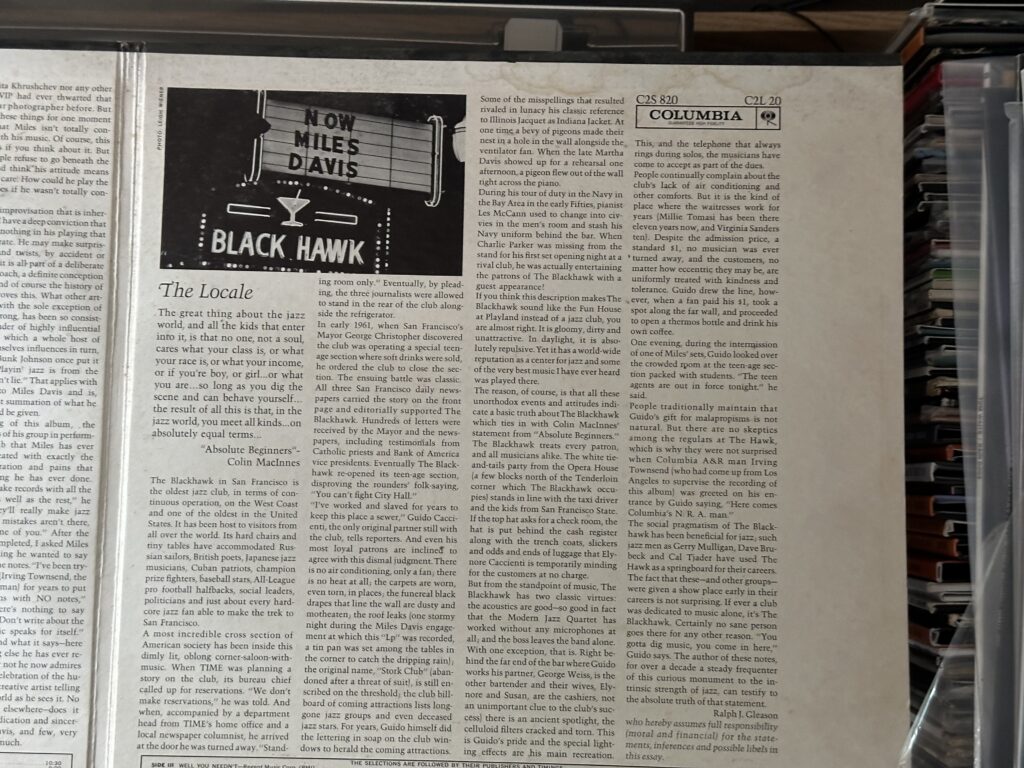
The other noteworthy thing here is the material. Many of the standards here lean toward a lighter melodic approach, as do the originals. Miles was playing “No Blues” on Someday My Prince Will Come, as well as “Teo” (here called “Neo”), but the faster live tempo on “No Blues” knocks some of the languor off and turns the piece into what it remains today, a flexible almost-nothing of a tune that could be a 30-second signal for a set break or a 15-minute joyous improvisation.
This is also a rare opportunity to hear “Fran-Dance,” a lovely Miles ballad whose only studio recording came on Jazz Track, an “odds and sods” release from 1959 that collected three tracks from the Miles Davis Sextet together with the miraculous soundtrack to the Louis Malle film Ascenseur pour l’échafaud. Where the original studio version with the great sextet seems to straddle the line between mediative and lovely, the version here adds a touch of suggestiveness thanks to Mobley and Kelly’s more soulful playing. It’s a gift to have the recording; Miles stopped playing “Fran-Dance,” written for his first wife Frances Taylor (who also appears on the cover), after their separation in 1965.
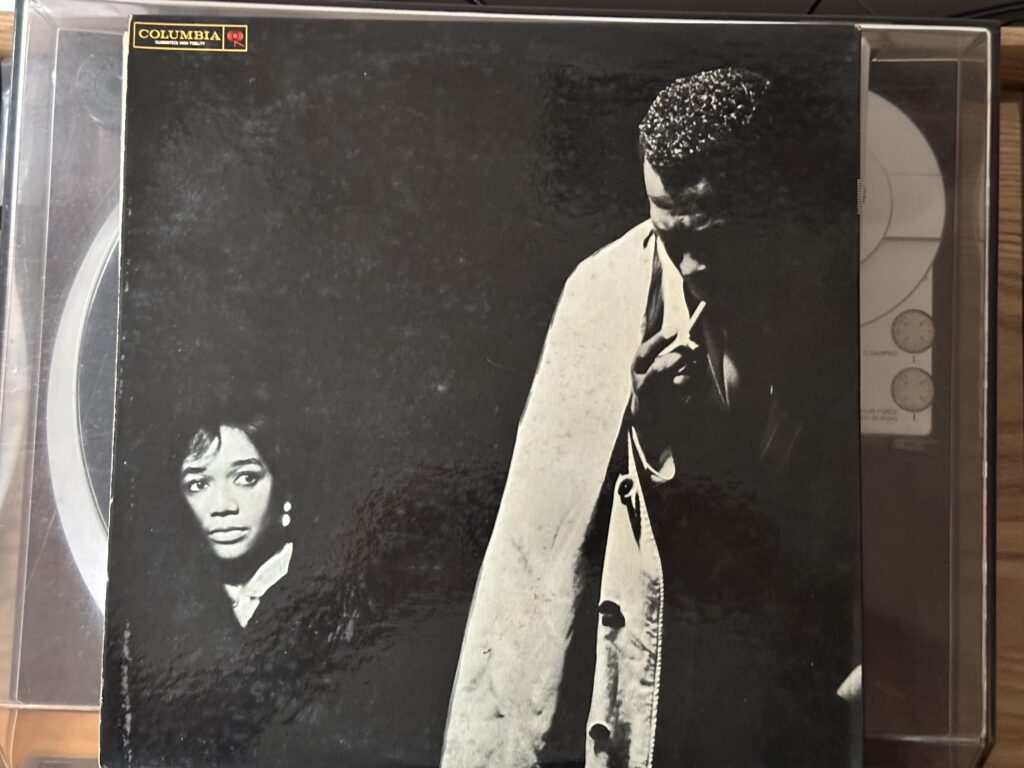
The performances on In Person are an opportunity to hear Miles in a different place—not yet free of his harmonic conceptions from the Kind of Blue era, not yet with the new quintet that would take him to the birth of fusion. There are plenty of fantastic compositions and performances during this period, roughly from 1961’s Someday My Prince Will Come to 1964’s live masterpiece My Funny Valentine. But there was also darkness; Miles suffered from addictions to cocaine and alcohol that caused him to behave erratically, ultimately leading Frances Taylor to flee from him in 1965. He also began experiencing the hip pain that led to a series of operations in mid-1965; he finally recovered enough to return to recording in 1965, with E.S.P.
I don’t have more Miles recordings to dive into in this series, so we’ll let that thread of the story go; you can read more about what happened after this record starting with my review of Miles Davis At Carnegie Hall from the previous series. But I have lots more to talk about with the sidemen from that second great quintet; we’ll pick up with an album from one of them next week.
You can listen to this week’s album here:

